-
 Bitcoin
Bitcoin $101,898.5005
-0.75% -
 Ethereum
Ethereum $2,258.1125
-1.07% -
 Tether USDt
Tether USDt $1.0004
0.01% -
 XRP
XRP $2.0178
-2.93% -
 BNB
BNB $624.0243
-1.53% -
 Solana
Solana $134.3298
-0.90% -
 USDC
USDC $0.9999
0.01% -
 TRON
TRON $0.2675
-2.05% -
 Dogecoin
Dogecoin $0.1538
-1.96% -
 Cardano
Cardano $0.5482
-1.11% -
 Hyperliquid
Hyperliquid $35.5636
5.45% -
 Bitcoin Cash
Bitcoin Cash $453.4902
-1.66% -
 Sui
Sui $2.5134
-2.97% -
 UNUS SED LEO
UNUS SED LEO $9.1292
1.77% -
 Chainlink
Chainlink $11.8457
-1.60% -
 Stellar
Stellar $0.2312
-2.73% -
 Avalanche
Avalanche $16.9721
0.29% -
 Toncoin
Toncoin $2.7549
-3.82% -
 Shiba Inu
Shiba Inu $0.0...01081
-1.10% -
 Litecoin
Litecoin $80.8250
-0.71% -
 Hedera
Hedera $0.1374
0.21% -
 Monero
Monero $305.4827
-2.36% -
 Ethena USDe
Ethena USDe $1.0006
0.00% -
 Dai
Dai $1.0000
-0.01% -
 Polkadot
Polkadot $3.2085
-3.12% -
 Bitget Token
Bitget Token $4.0845
-3.13% -
 Uniswap
Uniswap $6.3353
-1.63% -
 Pi
Pi $0.5085
-0.70% -
 Pepe
Pepe $0.0...08913
-3.82% -
 Aave
Aave $232.7090
-0.58%
Why is EMA more important for short-term trading? Does it react faster?
The EMA's emphasis on recent data makes it ideal for short-term crypto trading, reacting faster to price changes than the SMA for timely trade signals.
May 24, 2025 at 06:21 am
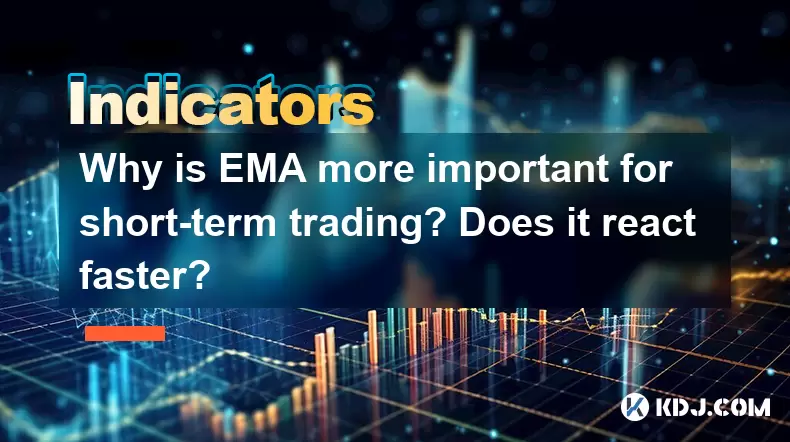
The Exponential Moving Average (EMA) is a popular technical indicator used by traders to identify trends and potential entry and exit points in the cryptocurrency market. When it comes to short-term trading, the EMA holds a significant advantage over other types of moving averages, such as the Simple Moving Average (SMA), due to its ability to react faster to price changes. In this article, we will explore why the EMA is more important for short-term trading and how it reacts faster to market movements.
Understanding the EMA and its Calculation
The EMA is a type of moving average that places more weight on recent price data, making it more responsive to recent market changes. Unlike the SMA, which gives equal weight to all data points in its calculation, the EMA uses a multiplier that emphasizes the most recent price action. The formula for calculating the EMA is as follows:
[ \text{EMA} = (\text{Price} - \text{Previous EMA}) \times \text{Multiplier} + \text{Previous EMA} ]
Where the multiplier is calculated as:
[ \text{Multiplier} = \frac{2}{\text{Periods} + 1} ]
The EMA's emphasis on recent data makes it an ideal tool for short-term traders who need to quickly identify and react to market trends.
Reactivity of the EMA
One of the primary reasons why the EMA is more important for short-term trading is its faster reaction to price changes. Because the EMA places more weight on recent price data, it can quickly adapt to sudden shifts in the market, providing traders with timely signals for potential trades.
For example, if the price of a cryptocurrency suddenly spikes, the EMA will adjust more rapidly than the SMA, reflecting the new price action sooner. This faster reaction time allows short-term traders to capitalize on short-lived market movements and make more informed trading decisions.
EMA and Short-Term Trading Strategies
The EMA's responsiveness makes it a valuable tool for various short-term trading strategies. Some of the most common strategies that utilize the EMA include:
Trend Following: Traders use the EMA to identify the direction of the market trend and enter trades in the direction of the trend. For example, if the price is consistently above the EMA, it may indicate an uptrend, and traders might look for buying opportunities.
Crossovers: EMA crossovers involve using two EMAs with different periods. When the shorter-term EMA crosses above the longer-term EMA, it may signal a potential bullish trend, while a cross below may indicate a bearish trend. Traders can use these crossovers to enter and exit trades.
Support and Resistance: The EMA can also act as a dynamic support or resistance level. If the price consistently bounces off the EMA, traders might use it as a level to enter trades or set stop-loss orders.
Comparing EMA and SMA for Short-Term Trading
To better understand why the EMA is more important for short-term trading, let's compare it to the SMA:
Sensitivity: The EMA is more sensitive to recent price changes, making it better suited for short-term trading. The SMA, on the other hand, is less responsive and may lag behind the market, which can be detrimental for short-term traders.
Lag Time: The EMA has a shorter lag time compared to the SMA. This means that the EMA will reflect changes in the market more quickly, allowing traders to act on new information sooner.
Signal Generation: The EMA generates trading signals faster than the SMA. For short-term traders, this can mean the difference between catching a profitable trade and missing out on an opportunity.
Practical Application of EMA in Short-Term Trading
To effectively use the EMA for short-term trading, traders can follow these steps:
Choose the Right EMA Period: The period of the EMA will depend on the trader's time frame and trading style. For very short-term trading, a 5 or 10-period EMA might be suitable, while a 20 or 50-period EMA could be used for slightly longer-term trades.
Combine with Other Indicators: While the EMA is a powerful tool on its own, combining it with other technical indicators, such as the Relative Strength Index (RSI) or the Moving Average Convergence Divergence (MACD), can provide more robust trading signals.
Monitor Price Action: Always keep an eye on the price action around the EMA. If the price consistently respects the EMA as a support or resistance level, it can provide valuable insights for trade entries and exits.
Set Stop-Loss and Take-Profit Levels: Use the EMA to set stop-loss and take-profit levels. For example, if trading a bullish trend, a stop-loss could be placed below the EMA, while a take-profit might be set at a resistance level identified by the EMA.
EMA in Different Market Conditions
The EMA's effectiveness can vary depending on market conditions. In trending markets, the EMA can be particularly useful for identifying and riding the trend. However, in sideways or choppy markets, the EMA might generate false signals due to its sensitivity. Traders should be aware of the current market environment and adjust their use of the EMA accordingly.
Real-World Example of EMA in Short-Term Trading
To illustrate the practical application of the EMA in short-term trading, let's consider a hypothetical scenario:
Suppose a trader is monitoring the price of Bitcoin (BTC) on a 15-minute chart. They have set up a 10-period EMA and a 20-period EMA. The trader notices that the 10-period EMA has crossed above the 20-period EMA, indicating a potential bullish trend. The price is also consistently staying above the 10-period EMA, suggesting strong buying pressure.
Based on this information, the trader decides to enter a long position on BTC. They set their stop-loss just below the 10-period EMA and their take-profit at a resistance level identified by a previous high. As the price continues to trend upwards, the trader monitors the EMA for any signs of a reversal. If the price starts to fall below the 10-period EMA, the trader might consider exiting the trade to minimize losses.
Frequently Asked Questions
Q: Can the EMA be used for long-term trading as well?
A: Yes, the EMA can be used for long-term trading by adjusting the period to a higher value, such as 50 or 200. However, its sensitivity makes it more suitable for short-term trading.
Q: How do I choose the right EMA period for my trading strategy?
A: The choice of EMA period depends on your trading time frame and style. Shorter periods (e.g., 5-10) are better for very short-term trading, while longer periods (e.g., 20-50) might be more suitable for slightly longer-term trades. Experiment with different periods to find what works best for your strategy.
Q: Is it necessary to use multiple EMAs for short-term trading?
A: Using multiple EMAs can provide more robust signals, especially when looking for crossovers. However, it's not strictly necessary. Some traders find success using a single EMA combined with other indicators.
Q: How can I avoid false signals when using the EMA in short-term trading?
A: To avoid false signals, consider using the EMA in conjunction with other indicators, such as the RSI or MACD, to confirm trends. Also, be mindful of the overall market environment, as the EMA can be less effective in choppy or sideways markets.
Disclaimer:info@kdj.com
The information provided is not trading advice. kdj.com does not assume any responsibility for any investments made based on the information provided in this article. Cryptocurrencies are highly volatile and it is highly recommended that you invest with caution after thorough research!
If you believe that the content used on this website infringes your copyright, please contact us immediately (info@kdj.com) and we will delete it promptly.
- Bitcoin Price Wobbles: Crash Watch and Key Support Levels
- 2025-06-23 16:25:12
- Navigating the Crypto Seas: Charting a Course Through Bull Runs and Bear Markets
- 2025-06-23 16:25:12
- BNB Price Check: Stablecoin Surge vs. Prediction Rollercoaster
- 2025-06-23 14:25:12
- Metaplanet's Bitcoin Bonanza: Holdings Skyrocket Amidst Market Swings
- 2025-06-23 14:25:12
- Global Meltdown, Investors, and Safe Havens: Navigating the Storm
- 2025-06-23 14:30:12
- NFT Sales Snapshot: Guild of Heroes, Polygon, and the Market's Shifting Sands
- 2025-06-23 15:25:12
Related knowledge

How much volume is required for the W-bottom to break through the neckline of the time-sharing chart?
Jun 23,2025 at 04:21pm
Understanding the W-Bottom Pattern in Cryptocurrency TradingThe W-bottom pattern is a popular technical analysis formation used by traders to identify potential bullish reversals. It typically appears at the end of a downtrend and resembles the letter 'W' on price charts. In the context of cryptocurrency trading, where volatility is high and trends shif...

How to read the sideways consolidation after the bottom volume and long positive line?
Jun 23,2025 at 02:28pm
Understanding the Sideways ConsolidationWhen analyzing cryptocurrency charts, sidewards consolidation refers to a phase where prices move within a narrow range without a clear upward or downward trend. This pattern often appears after significant price movements, such as a sharp increase followed by a period of equilibrium between buyers and sellers. In...
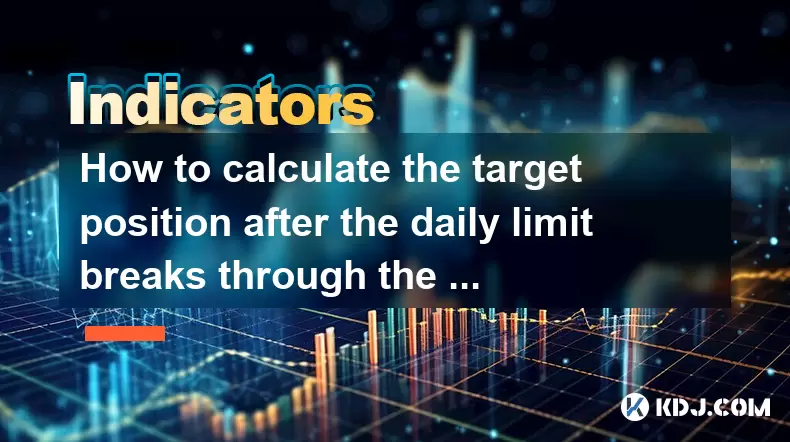
How to calculate the target position after the daily limit breaks through the previous high?
Jun 23,2025 at 02:57pm
Understanding the Daily Limit BreakthroughIn cryptocurrency trading, a daily limit typically refers to the maximum price movement allowed within a single trading day on certain exchanges. When this limit is breached, especially when it surpasses the previous high, traders often seek to calculate the target position or expected price movement following s...
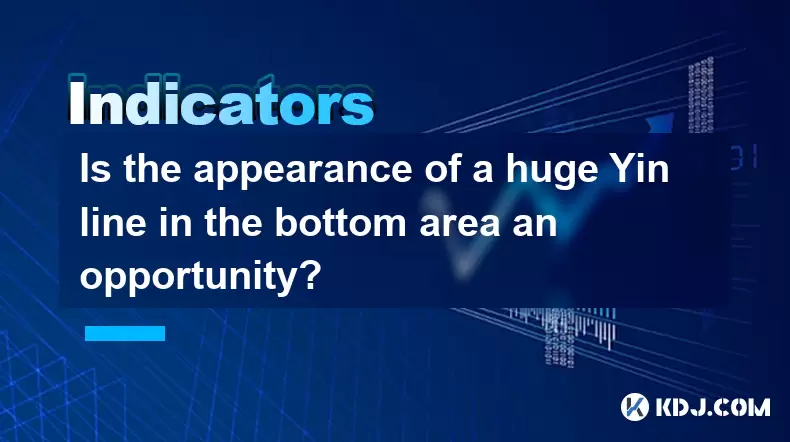
Is the appearance of a huge Yin line in the bottom area an opportunity?
Jun 23,2025 at 04:07pm
Understanding the Meaning of a Huge Yin LineIn technical analysis within the cryptocurrency market, a huge Yin line is often interpreted as a strong bearish signal. It indicates that sellers have dominated the market over a specific period, pushing prices significantly downward. When this occurs in what appears to be a bottom area, traders might questio...
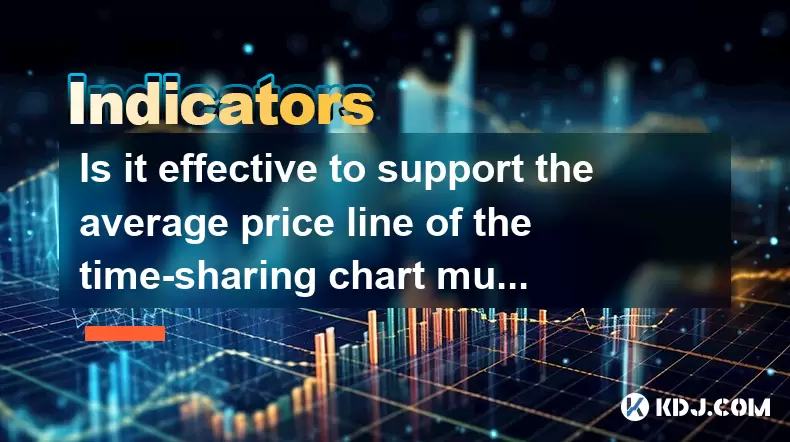
Is it effective to support the average price line of the time-sharing chart multiple times?
Jun 23,2025 at 01:36pm
Understanding the Average Price Line in Time-Sharing ChartsIn cryptocurrency trading, time-sharing charts refer to real-time price charts that display price movements over short intervals, often within a single trading day. Within these charts, the average price line, also known as the Volume Weighted Average Price (VWAP), is a commonly used technical i...
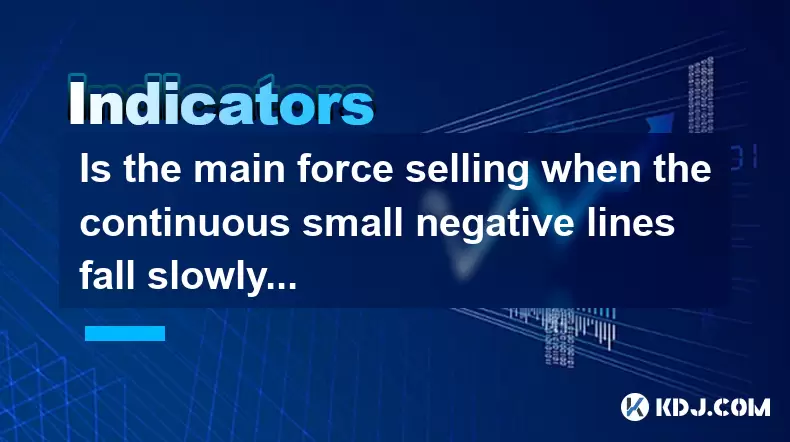
Is the main force selling when the continuous small negative lines fall slowly?
Jun 23,2025 at 03:35pm
Understanding Continuous Small Negative Lines in Cryptocurrency ChartsIn cryptocurrency trading, continuous small negative lines refer to a pattern where the price of an asset declines gradually over time with small bearish candlesticks. These candlesticks typically have short bodies and may or may not have wicks. This pattern often appears during perio...

How much volume is required for the W-bottom to break through the neckline of the time-sharing chart?
Jun 23,2025 at 04:21pm
Understanding the W-Bottom Pattern in Cryptocurrency TradingThe W-bottom pattern is a popular technical analysis formation used by traders to identify potential bullish reversals. It typically appears at the end of a downtrend and resembles the letter 'W' on price charts. In the context of cryptocurrency trading, where volatility is high and trends shif...

How to read the sideways consolidation after the bottom volume and long positive line?
Jun 23,2025 at 02:28pm
Understanding the Sideways ConsolidationWhen analyzing cryptocurrency charts, sidewards consolidation refers to a phase where prices move within a narrow range without a clear upward or downward trend. This pattern often appears after significant price movements, such as a sharp increase followed by a period of equilibrium between buyers and sellers. In...

How to calculate the target position after the daily limit breaks through the previous high?
Jun 23,2025 at 02:57pm
Understanding the Daily Limit BreakthroughIn cryptocurrency trading, a daily limit typically refers to the maximum price movement allowed within a single trading day on certain exchanges. When this limit is breached, especially when it surpasses the previous high, traders often seek to calculate the target position or expected price movement following s...

Is the appearance of a huge Yin line in the bottom area an opportunity?
Jun 23,2025 at 04:07pm
Understanding the Meaning of a Huge Yin LineIn technical analysis within the cryptocurrency market, a huge Yin line is often interpreted as a strong bearish signal. It indicates that sellers have dominated the market over a specific period, pushing prices significantly downward. When this occurs in what appears to be a bottom area, traders might questio...

Is it effective to support the average price line of the time-sharing chart multiple times?
Jun 23,2025 at 01:36pm
Understanding the Average Price Line in Time-Sharing ChartsIn cryptocurrency trading, time-sharing charts refer to real-time price charts that display price movements over short intervals, often within a single trading day. Within these charts, the average price line, also known as the Volume Weighted Average Price (VWAP), is a commonly used technical i...

Is the main force selling when the continuous small negative lines fall slowly?
Jun 23,2025 at 03:35pm
Understanding Continuous Small Negative Lines in Cryptocurrency ChartsIn cryptocurrency trading, continuous small negative lines refer to a pattern where the price of an asset declines gradually over time with small bearish candlesticks. These candlesticks typically have short bodies and may or may not have wicks. This pattern often appears during perio...
See all articles
























































































